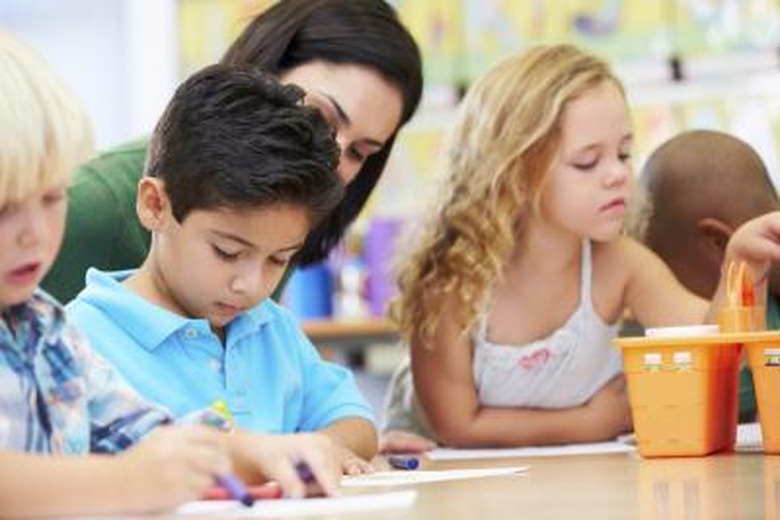How To Explain Density To Elementary Students
An explanation of density to elementary-school children can begin with discussion on weight, especially why two objects of the same size might have different weights. Next, introduce the concept of volume to describe the size of objects. Third, you can show them why some objects sink in water and others float, laying the foundation for the understanding of density.
Step 1
Hold up the Styrofoam ball and the rubber ball and ask the class to guess which ball would be lighter. Allow a student or two (or the entire group, for small classes) feel each of the balls for themselves. Explain that the Styrofoam ball has less mass once they've understood that it's lighter.
Step 2
Turn on the scale and show the class that it sets to zero when turned on and empty. Set a light object, such as car keys, on the scale and point to the numbers as they rise. Set a heavy object, such as a book, on the scale to show that the numbers climb much higher for heavier objects. Remove the book and let the scale return to zero.
Step 3
Place the Styrofoam ball on the scale and tell a child to read the numbers on the scale. Remove the Styrofoam and place the rubber ball on the scale. Tell the same child to read the numbers on the scale. Ask the children whether the second ball had a higher or lower number.
Step 4
Cover the basic introduction to volume again. Blow up two balloons, making them of noticeably different sizes. Ask the class which balloon takes up more space. Explain that the larger balloon takes up more space and, therefore, has a higher volume.
Step 5
Remind the class of your definition of density. Set out the three small plastic containers. Leave the first container empty. Pour a small amount of water into the second container and a large amount of water into the third. Explain that the containers have the same volume but ask which of the three will float in a large tub of water. Let the children guess, examining the weight of the containers with their hands, and weigh the containers on the scale to help them guess.
Step 6
Place the container the children choose as the most likely to float in a large plastic tub filled with water. Follow with the other two containers. Explain why each container floated or sank, based on its weight relative to the water.
Step 7
Wrap up your experiment by explaining to the children that a change in volume or mass will change the total density of an object. Answer any questions they might have for you, then clean up your workstation, allowing the children to help if time permits.
Things Needed
- Styrofoam ball
- Rubber ball, similar physical size to Styrofoam ball
- Electronic scale
- Balloons
- 3 small plastic containers
- Water
- Plastic tub
Cite This Article
MLA
Williams, Grace. "How To Explain Density To Elementary Students" sciencing.com, https://www.sciencing.com/explain-density-elementary-students-7706125/. 29 April 2018.
APA
Williams, Grace. (2018, April 29). How To Explain Density To Elementary Students. sciencing.com. Retrieved from https://www.sciencing.com/explain-density-elementary-students-7706125/
Chicago
Williams, Grace. How To Explain Density To Elementary Students last modified March 24, 2022. https://www.sciencing.com/explain-density-elementary-students-7706125/







